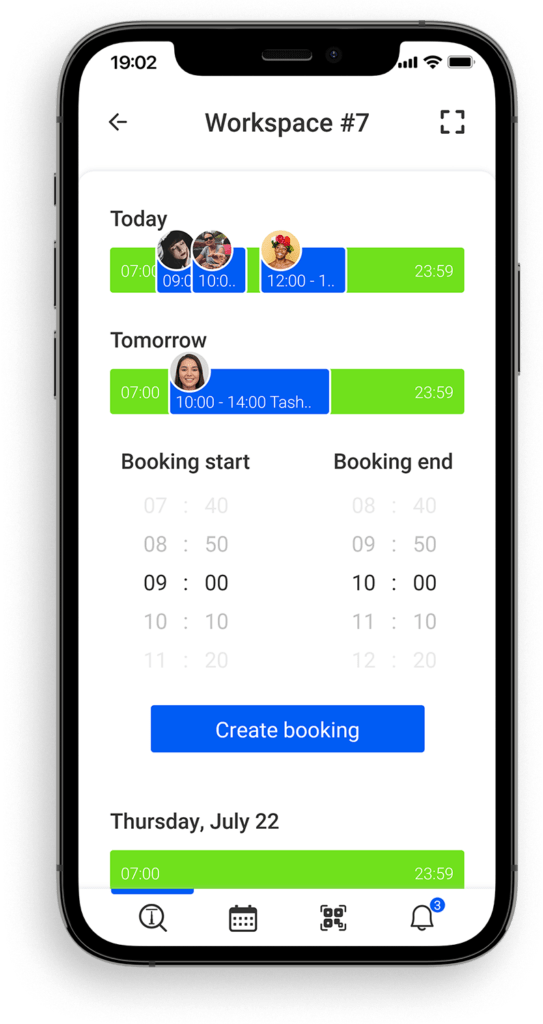
The modern office has undergone significant changes over the past decade. Open-plan spaces have replaced traditional cubicle farms, hybrid and remote work have become the new normal, and technology has transformed how we work. As a result, employees have higher expectations for the workplace, and perks like free coffee and snacks aren’t enough to keep employees satisfied. With the rise of remote work, flexible schedules, and an emphasis on work-life balance, the modern office must adapt to meet the needs of its employees.
So, what do employees expect from a modern office? Flexibility, comfort, technology, or career growth? And how do these expectations play a role in creating a modern office that meets the expectations of today’s employees?
Many employees value work-life balance, which can be challenging to achieve in a traditional 9 to 5 office environment. Flexible work arrangements, such as remote work or flexible schedules, allow employees to balance their work and personal responsibilities better, leading to increased job satisfaction, reduced stress, and even productivity. Additionally, technology has made it possible to perform many jobs from anywhere, anytime. Employers offering flexible work arrangements can attract and retain top talent better, providing the flexibility many employees value. And many companies have recognized the benefits of flexible work arrangements, such as reduced overhead costs and increased productivity.
In the modern workplace, employees are seeking a collaborative culture that is open to sharing ideas. Employers can foster a culture of collaboration and idea-sharing by providing employees with spaces where they can brainstorm and work together. This can lead to the development of new ideas and solutions, which can ultimately benefit the organization. And when employees have access to collaborative spaces, they can work together more efficiently, which can help speed up project timelines and improve overall productivity.
Also, collaborative spaces can improve communication and teamwork. Employees can work together in a shared space and communicate more effectively. This can help build stronger relationships between team members, promote unity within the modern office, and create an inclusive climate.
Several types of collaborative spaces can be used for a different kind of teamwork:
Employees need technology not only to perform their daily job functions but also to communicate and collaborate with the rest of the team and sometimes even to improve productivity. When employees have access to the right technology, they can work more efficiently, which can help speed up project timelines and improve overall productivity.
Also, technology can help improve the employee experience. For example, providing employees with modern, user-friendly software and hardware can reduce frustration and make work more enjoyable. This can lead to improved job satisfaction and employee retention.
There are several types of technology that employees may expect from a modern office:

Employees spend a significant amount of time in the office, and exposure to poor air quality, noise pollution, and other environmental hazards can lead to various health issues, such as headaches, respiratory problems, and stress. Employers can help reduce the risk of these issues by providing a healthy and stress-free environment and promoting a healthier workplace. Also, a sustainable environment can help reduce waste, energy consumption, and other costs, ultimately improving the organization’s bottom line. And it is no secret that more and more employees care about sustainability, and they want to work in companies that focus on sustainability as part of their business strategy because it gives meaning to their work. Here are just a few simple examples of how employers can create a healthy and sustainable environment in the office:
Comfortable office furniture can significantly impact employee health and well-being. Sitting in an uncomfortable chair or working at a poorly designed desk can lead to various physical ailments, such as back pain, neck pain, and repetitive strain injuries. Employers can help reduce the risk of these damages by providing employees with comfortable and ergonomic furniture and promoting a healthier workplace.
Also, when employees are comfortable and able to work in an ergonomic position, they are less likely to experience discomfort or pain, which can lead to distractions and decreased productivity. By providing employees with comfortable furniture, employers can create a more productive work environment and show that they value their employees and are committed to building a positive and supportive work environment.
Respect is a fundamental human need and essential for building positive relationships in the workplace. When treated with respect, employees are less likely to experience stress, conflict, or harassment in the workplace. Some steps may help you to create a more positive workplace culture:
When employees feel that they have the opportunity to learn new skills and advance their careers, they are more likely to feel motivated and committed to their work. Growth opportunities are essential for maintaining a competitive edge in the marketplace. As technology and business practices evolve, employees need to be able to adapt and learn new skills to keep up with the changing demands of the job. By providing growth opportunities, employers can ensure their employees have the skills and knowledge they need to stay competitive.
By promoting an inclusive culture, employers can ensure that all employees feel valued and respected, regardless of race, gender, sexual orientation, or other personal characteristics. Employees who feel part of a supportive and inclusive workplace are more likely to be engaged and motivated. This way, your company can show commitment to creating a welcoming workplace for all employees.
The world is evolving, and so should the workplace. With a better understanding of what employees seek in a modern office, you can create an environment that your people will love, and it will be easier to attract new ones. From inclusive culture to growth opportunities – if you can provide an experience that exceeds your employees’ expectations, chances are good that you’ll grow with them, too.
Subscribe to the monthly newsletter!
By clicking the “Subscribe” button above, you agree to the Terms & Conditions and Privacy Policy
2014 – 2024 Proudly designed and made in Lithuania
Over 60,000 users worldwide can’t be wrong – see for yourself why they choose TableAir.